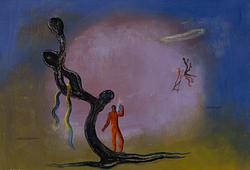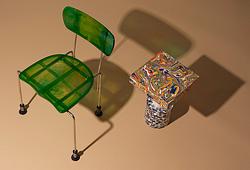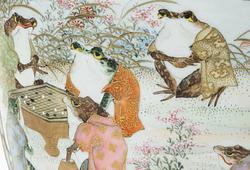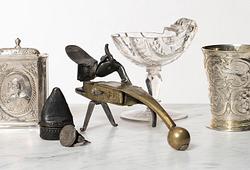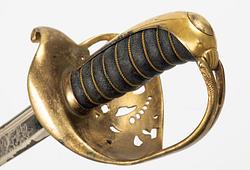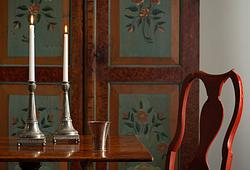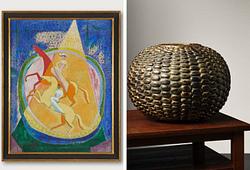Important Spring Sale presents Akseli Gallen-Kallela
Bukowskis presents "Isbildning" (Ice formations) by Akseli Gallen-Kallela at the seasons largest live auction – Important Spring Sale.
The Golden Age of Finnish art is said to have occurred between 1880 and 1916 and coincided with Finland's national awakening. Artists, sculptors, composers, architects, and writers delved into history and folklore to understand the true Finnish identity that they wished to convey through their creations. Of the Golden Age artists, it was undoubtedly Akseli Gallen-Kallela (1865-1931) who most devotedly researched and was fascinated by the Finnish national spirit. This passion for the pure Finnish included a love of nature, which Gallen-Kallela believed had shaped the character of the Finnish people in many ways.
"Those who live and work much in nature eventually achieve such a personal relationship with their surroundings that they can almost catch themselves talking to the trees of the forest. Our folk poetry also attests to a deep empathy with nature being a characteristic of us Finns. We seem to have a particular inclination to personify it; the forest's flora becomes an intimate friend, one begins to discern different characters among the trees and confides in them different things: the slender birch something different than the grey, gnarled pine, the storm-twisted spruce, or the gloomily dark fir. And the nature person follows the life of the forest with entirely different eyes than anyone else. She observes the slightest changes therein, both in terms of the trees' colour, their health, and vitality. For such a person, the forest is not dead even on the coldest day in February – it is merely so quiet that this very silence speaks. In the undergrowth's cover, the pulsing strong and full life contains something reminiscent of the hibernating bear in its den."(–Akseli Gallen-Kallela, "The Book of Gallén-Kallela", Holger Schildt Publishing, Helsinki 1948.)

Just before Christmas in 1895, Gallen-Kallela had moved into his new home with his wife Mary, which they named Kalela. The spacious log building was still largely unfinished at that time. During his time in Berlin, the artist had become interested in graphics, and around Christmas the year before, this interest took off as the several hundred-kilo etching press ordered from Manchester had arrived in Ruovesi. The first major Kalevala work, "The Defenders of the Sampo," was already on its way to an exhibition in Helsinki. The home was filled with the cries of a small baby. After the loss of their daughter Impi Marjatta, Mary and Akseli had another child. The breathtakingly beautiful winter made the artist's blood surge despite the severe cold. It was a remarkable November; the first snow had fallen before the ice had settled on Lake Isoselkä.
The pines were covered with snow that had frozen onto the branches. Soon followed windstill cold nights, and Lake Isoselkä was covered with mirror-like ice.
Like our Swedish painters, Gallen-Kallela travelled to Paris in the 1880s and joined Bastien Lepage's realistic painting. However, it was his journey to Eastern Karelia in 1890 that sparked his interest in Finnish national romanticism. His style became decoratively simplified, strongly emotional, and inspired by French symbolism and synthetism.
The work will be sold at Important Spring Sale
Estimate 1 000 000 - 1 500 000 SEK
Viewing June 5–10, Berzelii Park 1, Stockholm
Open weekdays 11–18, weekends 11–16 CET
Live auction June 1–13, Arsenalsgatan 2, Stockholm
Read more about Important Spring Sale
Requests & condition reports

Stockholm
Andreas Rydén
Head Specialist, Art, Deputy Managing Director
+46 (0)728 58 71 39

Stockholm
Rasmus Sjöbeck
Assistant Specialist Classic Art, Old Masters
+46 (0)727 33 24 02




